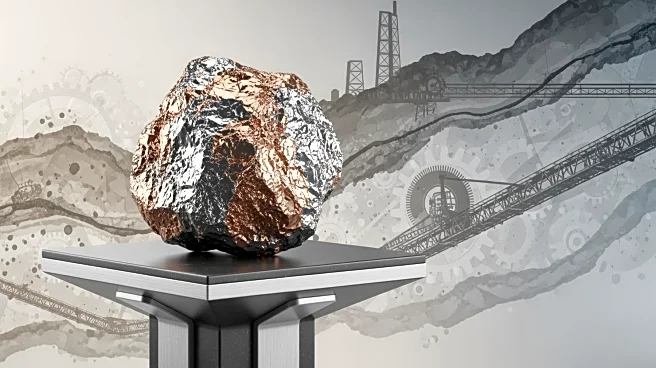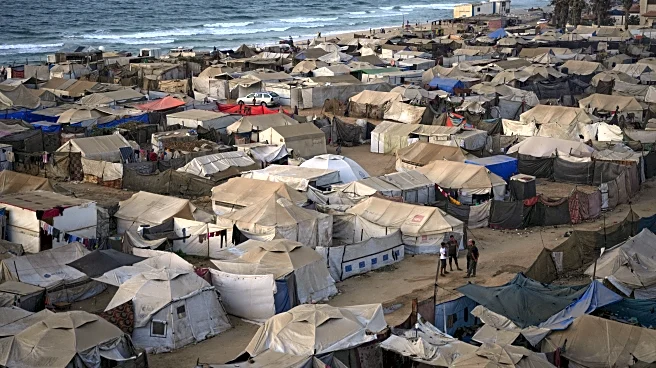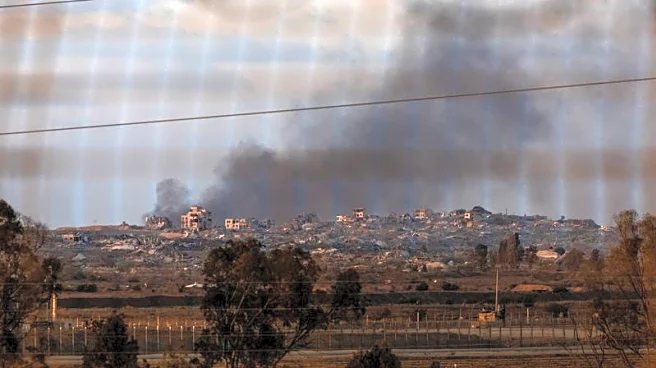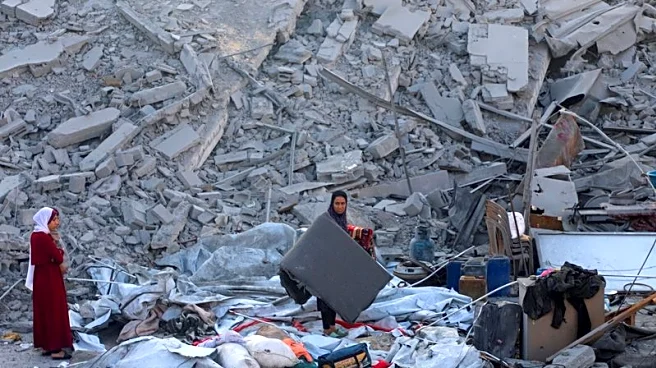What's Happening?
Recent studies have identified elevated natural radiation levels in Mamuju, Indonesia, attributed to high concentrations of radioactive elements such as uranium, thorium, and potassium in the soil. The research, published in Nature, highlights that uranium levels range
from 42.5 to 578.1 ppm, thorium from 138.8 to 3520 ppm, and potassium from 0.035% to 8.9%. These findings suggest significant exposure to natural radiation in the region. The study involved XRD analysis of soil samples, revealing dominant clay minerals like halloysite, kaolinite, and smectite, which contribute to the accumulation of radionuclides. The research underscores the influence of soil acidity on the concentration of these elements, with high uranium and thorium levels correlating with increased soil acidity.
Why It's Important?
The findings are significant as they provide insights into the natural radiation exposure in Mamuju, which is classified as a High Natural Background Radiation Area (HNBRA). This classification is due to ambient gamma dose rates exceeding international safety benchmarks. The elevated radiation levels pose potential health risks, including increased concentrations of radon and thoron, which are known risk factors for lung cancer. Understanding the geochemical processes contributing to these radiation levels is crucial for assessing environmental and public health impacts. The study also highlights the role of weathering and lateritization in the enrichment of radioactive elements, which could inform future environmental and health policies in the region.
What's Next?
Further research is needed to explore the long-term health implications of the elevated radiation levels in Mamuju. There may be a need for public health interventions to mitigate exposure risks. Additionally, the study's findings could prompt further investigations into similar regions with high natural background radiation levels. Policymakers might consider implementing monitoring and safety measures to protect residents from potential radiation-related health issues.
Beyond the Headlines
The study raises ethical and environmental concerns regarding the management of natural radiation exposure in populated areas. It also highlights the need for international collaboration in addressing global radiation safety standards. The research could lead to advancements in understanding the geological processes that contribute to natural radiation, potentially influencing mining and land use policies in regions with similar geological characteristics.















